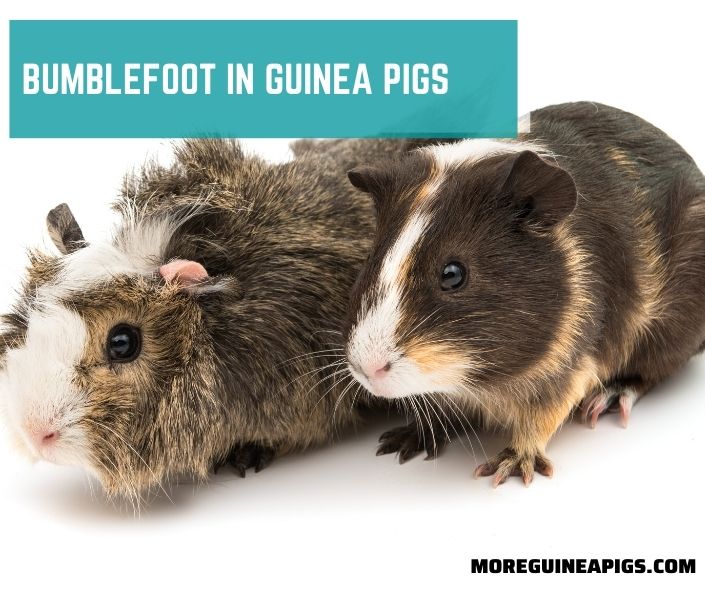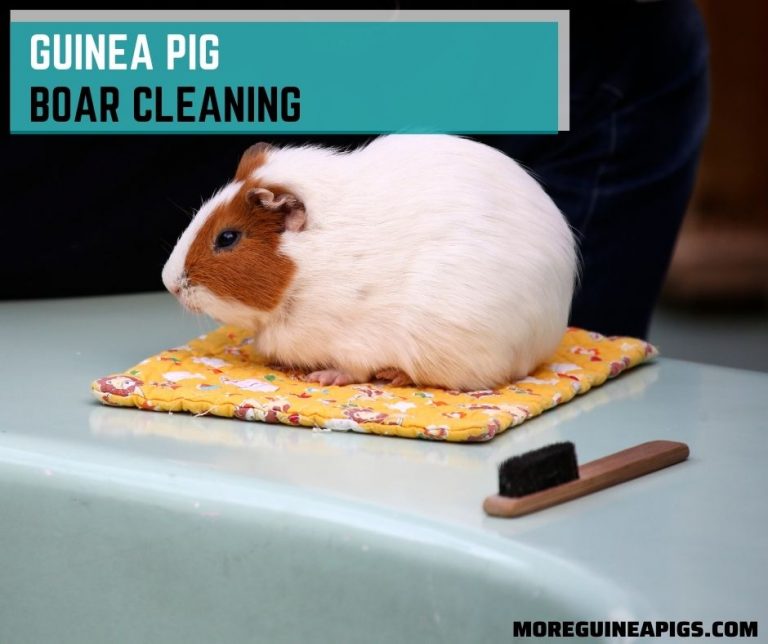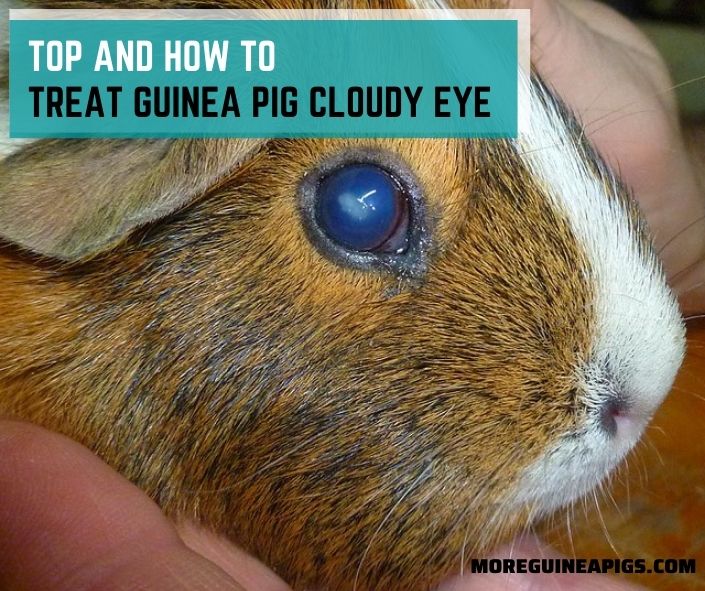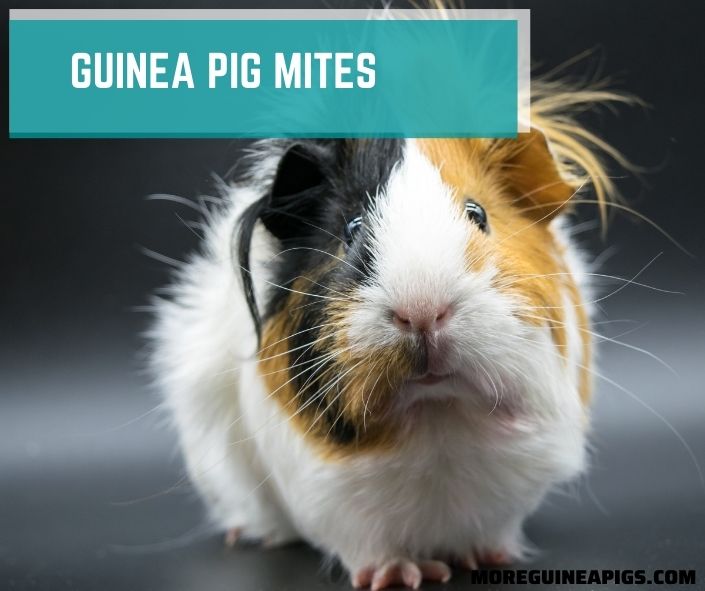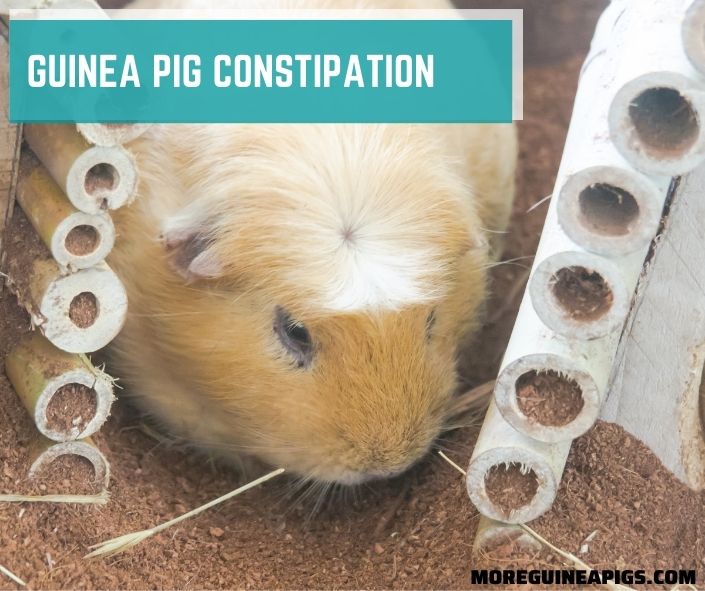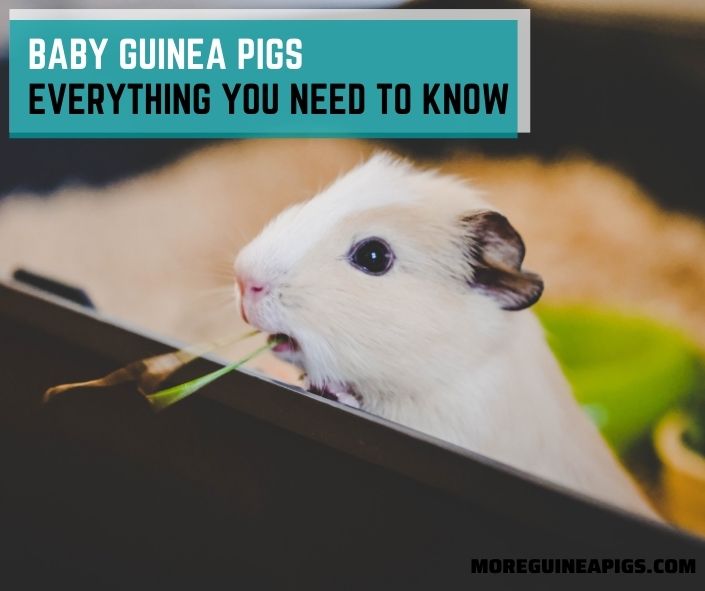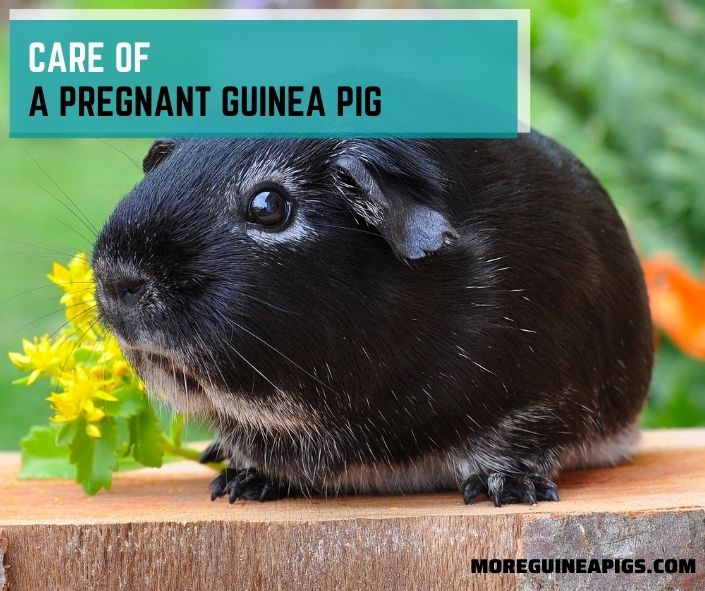Bumblefoot in Guinea Pigs: Signs, Causes, Treatment, and Preventison
Have you been noticing your guinea pig limping about or having difficulty moving? Does it appear to be in pain? Worse, are there crusty lesions or scabs on its tiny paws?
Then chances are that your pet has a condition called Bumblefoot or pododermatitis. Worry not! It is treatable, especially if you take action right away. And that is exactly what this guide is all about.
Read on to discover:
- Signs and symptoms of Bumblefoot in guinea pigs
- Factors that cause the condition
- And more…
How Do You Know If Your Guinea Pig Has Bumblefoot
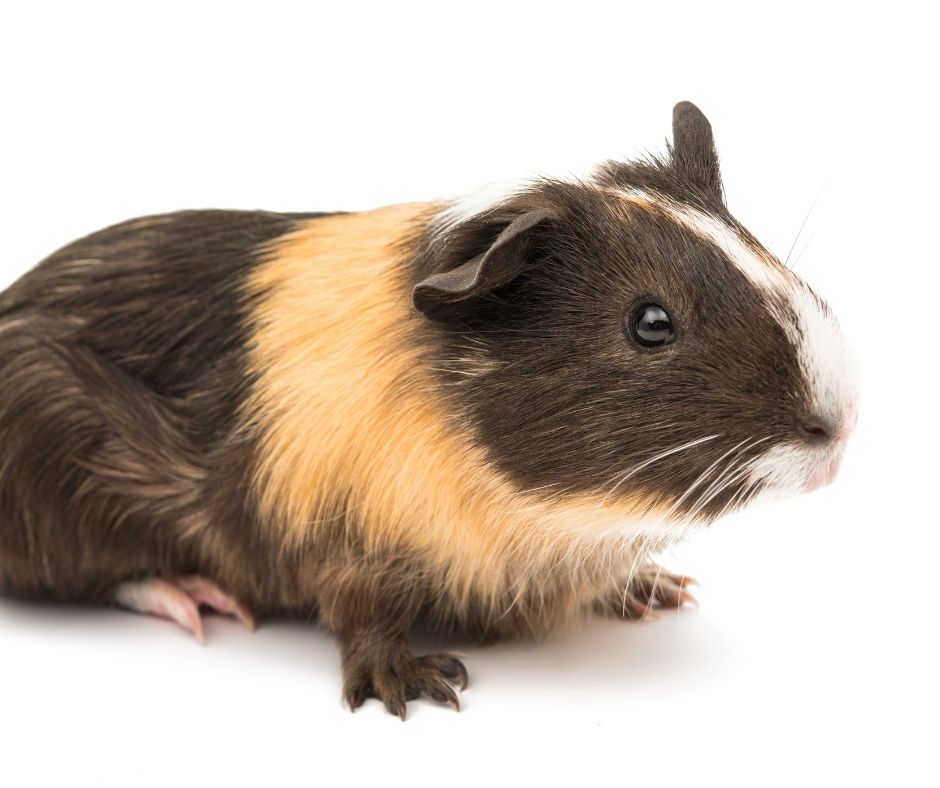
Bumblefoot or pododermatitis in guinea pigs is a bacterial skin infection of the paws caused by uneven pressure distribution and unhygienic conditions.
It mainly affects the hind paws (which support the majority of your pig’s weight) but could sometimes be seen on the front paws.
The infected skin of the paws, if left untreated, can progress to the tendons and even the bones of your pet’s feet.
The most obvious signs of Bumblefoot in guinea pigs are an awkward stance, reluctance to move, painful movements, hopping instead of walking, refusal to eat/anorexia, depression, lameness, weight loss, stress, aggression, and the inability to thrive.
Diagnosis of Bumblefoot in Guinea Pigs
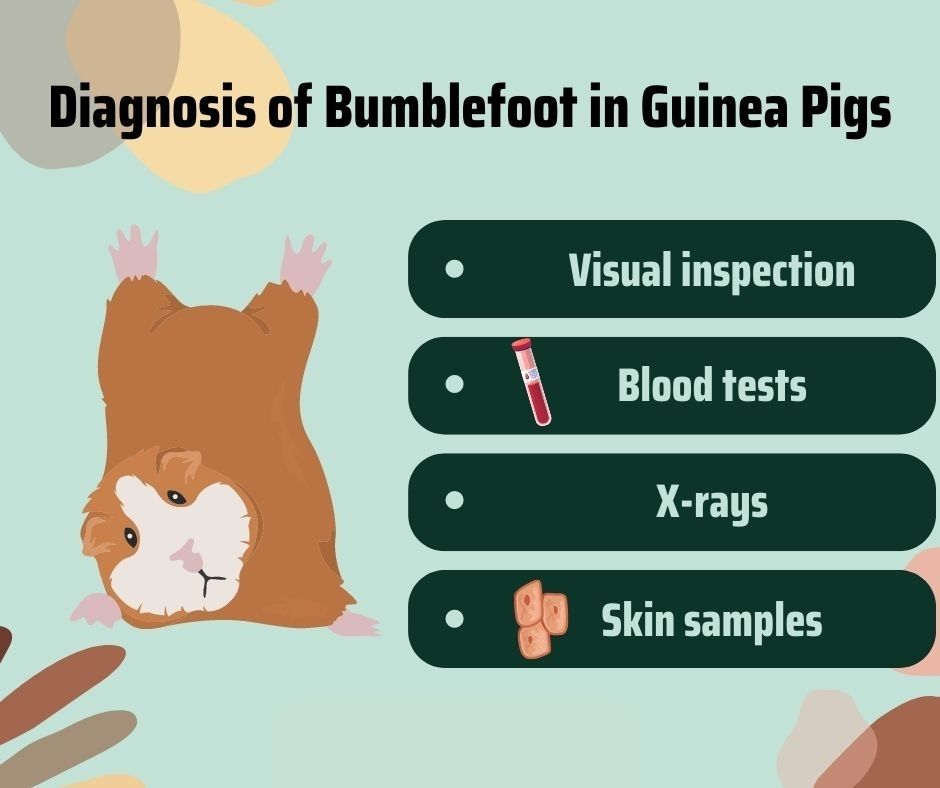
It is very important that you take your cavy to the vet if you suspect Bumblefoot.
- Visual inspection
Your vet will visually inspect the sores or scabs. If they suspect that the infection has gone deeper, then they may order some more tests.
- Blood tests
These help your vet assess how far the infection may have progressed. Blood tests will also show your pet’s overall health and pre-existing conditions if any.
- X-rays
X-rays and ultrasound tests show whether the infection has progressed to the bones of the feet. They can even show if your pig has conditions like arthritis which could be one of the causes of Bumblefoot in guinea pigs.
- Skin samples
Your vet might take some skin samples of the crusty lesions on the foot and study it under a microscope. This can help them know which bacteria has caused the infection and also the right antibiotic to treat it.
Prognosis & Expected Outcome of The Bumblefoot
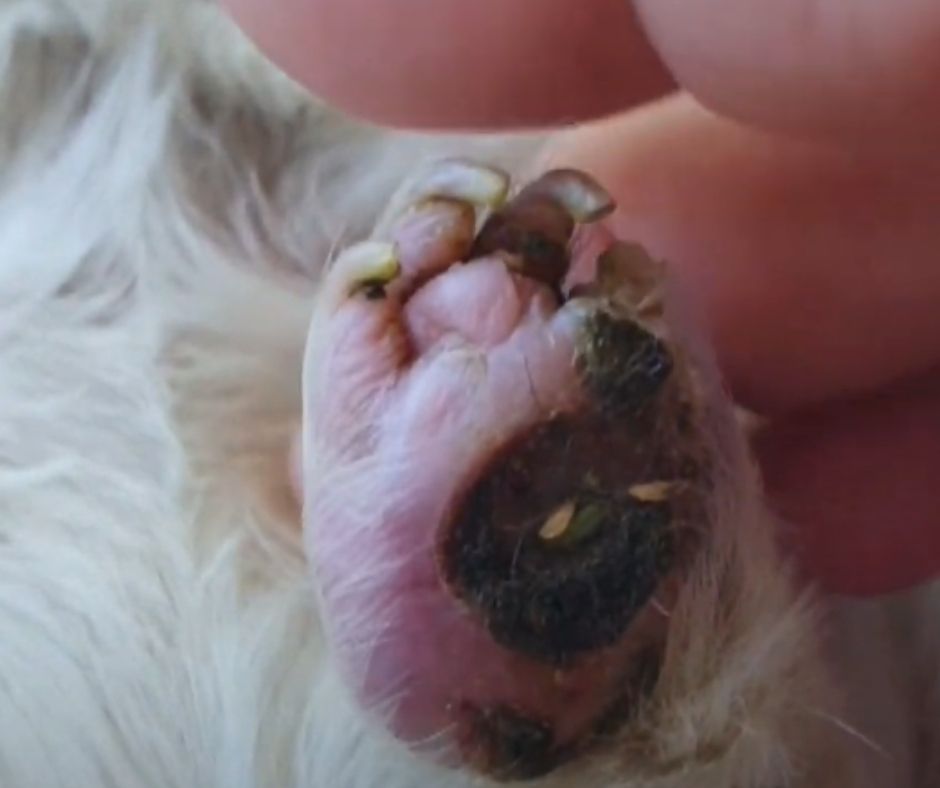
The prognosis of Bumblefoot in guinea pigs depends on the grade or severity of the disease:
Grade 1
This is highly treatable and has a good prognosis. At this stage, there may be a few signs such as redness or scabs on the paws. If you start treatment at this stage, your guinea pigs can recover fully.
Grade 2
This is also a highly treatable form of Bumblefoot. At this stage, the skin is still intact but there may be some redness, crusting, but no pain.
Grade 3
This is the moderate stage of Bumblefoot with ulceration and scabbing. This is also highly treatable with a good prognosis after aggressive treatment.
Grade 4
This is a severe form of pododermatitis and there is a high chance that deeper tissues are affected.
Grade 5
Unfortunately, this stage is irreversible. There is a risk of bone infection and permanent tendon damage. This can permanently affect your cavy’s gait and stance.
Grade 1-3 have a good prognosis but you will still have to take precautionary measures to ensure that the condition does not recur.
4 Causes Bumblefoot on Guinea Pigs
The most common cause of Bumblefoot in guinea pigs is an increase in pressure on the paws or lack of exercise. This may occur due to one of the following reasons:
- Overweight or Pressure Placed on the Feet
Bumblefoot is more common in larger guinea pig or giant guinea pig breeds such as the Rex, Capybara, and Cuy Criollo.
Obesity in normal-sized guinea pigs is also a factor. It results in an increased uneven pressure distribution on the hind paws. This leads to skin sores and inflammatory lesions which may be further aggravated due to lack of hygiene.
Pigs with arthritis, osteoarthritis, and lameness tend to move with an unnatural gait. This can put pressure on one or more paws resulting in Bumblefoot sores over time.
Lack of exercise in lone guinea pigs or pigs that lead a sedentary life can also result in weight gain and Bumblefoot.
- Injury or Lack of Exercise
An injured guinea pig might not move much and this too can press down on its weight-bearing legs.
Similarly, pain or other underlying diseases such as Vitamin C deficiency or Scurvy can reduce a pig’s mobility and could be a causative factor of pododermatitis.
Also, Elderly guinea pigs often suffer from Bumblefoot due to lack of exercise and a sedentary lifestyle. Especially during pregnancy, sows with reduced mobility could also suffer from Bumblefoot.
- Poor Housing Conditions
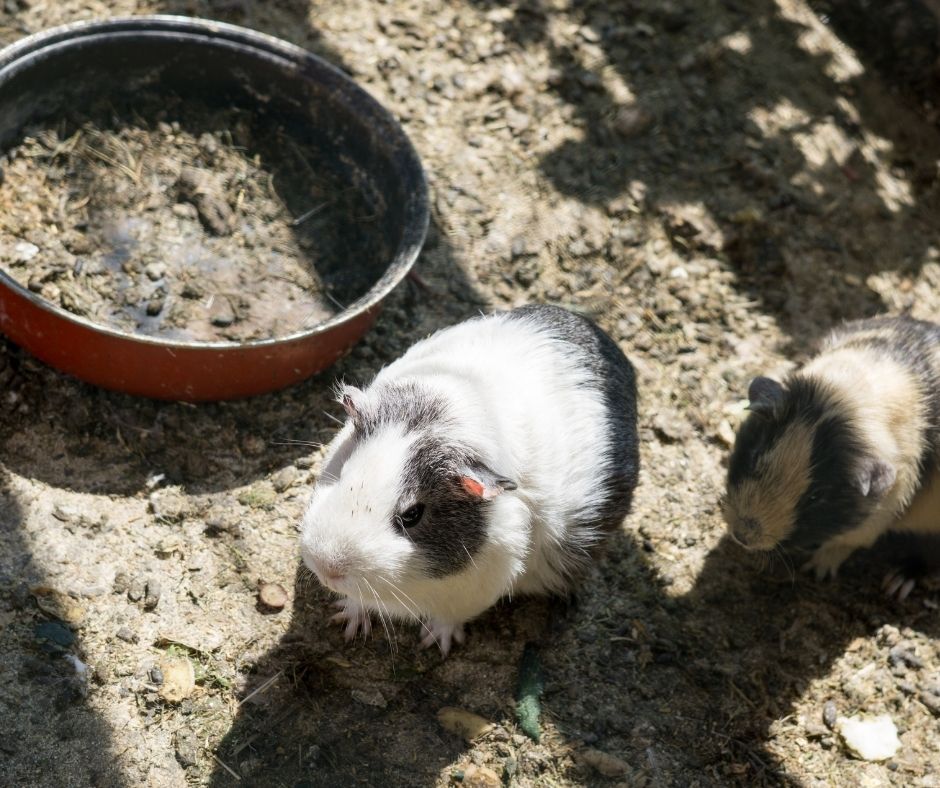
Guinea pigs that live on hard and abrasive grid flooring or constantly brush their paws on rough surfaces like sharp bedding, wire-floored cages, or rough carpets could also have an increased risk of Bumblefoot.
Add to this soiled and wet bedding and you have a bacterial breeding ground. The staphylococcus bacteria enter the skin sores and worsen the infection.
If you have multiple guinea pigs, then overcrowding in small cages can also result in an increased risk of pododermatitis. The animals may constantly stand in their urine or feces inviting such bacterial infections.
- Inadequate or Excess Grooming
Inadequate grooming such as untrimmed toenails or claws can also result in Bumblefoot. Affected guinea pigs might refrain from putting equal pressure on all paws due to sharp nails and end up putting more pressure on one or more paws.
Conversely, excess grooming such as removal or shaving off fur that grows underneath the paw could reduce the protective padding that helps protect the skin.
This exposes the delicate skin of the paws and might, over time, result in Bumblefoot lesions.
Also Read: How to Treat Crusty Nose in Guinea Pigs
How to Treat Bumblefoot in Guinea Pigs
Bumblefoot can recur despite treatment. Sure, medical treatment can alleviate most of the symptoms but you must take strict preventive measures to keep the infection from coming back.
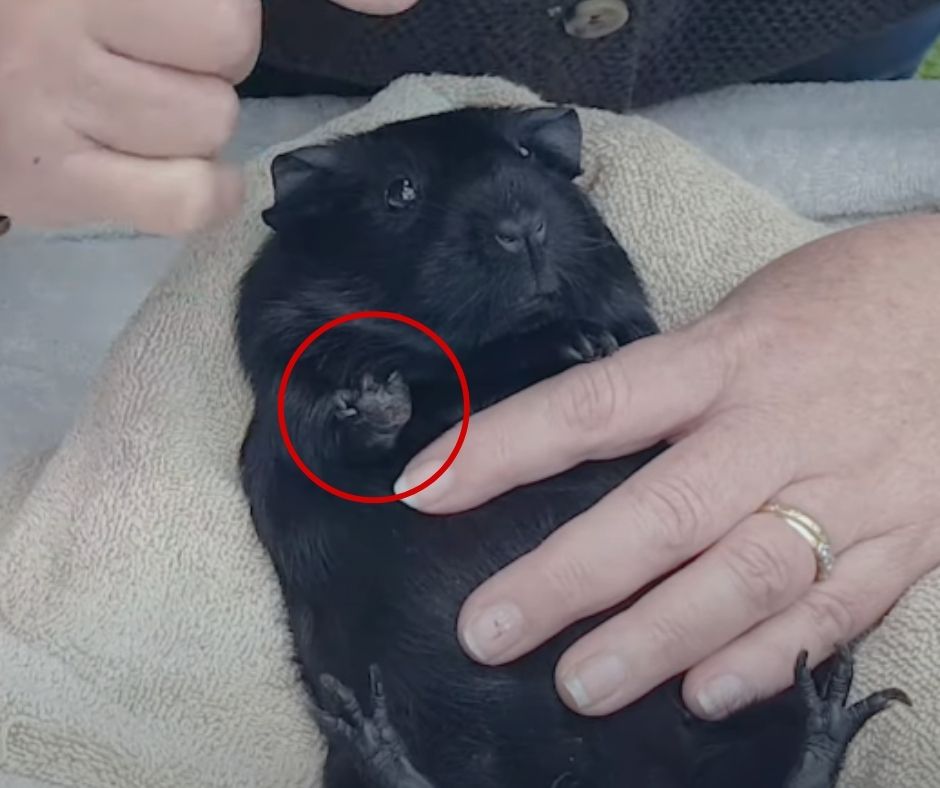
One thing is clear: Bumblefoot in guinea pigs often indicates an underlying health issue, inadequate hygiene, and/or an improper substrate. It certainly won’t go away on its own and needs aggressive intervention right from the beginning.
First Aid and Treating Bumblefoot at Home
You can treat mild to moderate or Bumblefoot grades 1 to 3 at home. Here are the steps to start with:
- Trim your pet’s long toenails.
- Clean the sore/lesion with a solution of warm water and Epsom salt.
- Dry the paw by gently patting it with a sterile cloth.
- Apply a topical antibiotic ointment. This will help curb the infection from spreading. Repeat this regularly until the sore heals completely.
- Dressing are not advised when there is an infection, as they need to drain and they require ventilation.
- If your pet appears to be in pain, provide an analgesic or pain relief medicine as advised by the vet.
- Restrict activity in the beginning while the paw heals. However, encourage activity afterward to prevent obesity.
Remember that grades 1-3 of Bumblefoot are highly likely to recur. So, make sure you follow precautionary measures like exercising your piggy, cleaning its cage, and treating other underlying causes mentioned above.
What Do Vets Do for Bumblefoot?
Bumblefoot grades 4 and above definitely need medical attention. Your vet will order some blood tests and even a USG or X-rays. These will help them know the underlying cause as well as the extent of the spread of the infection.
For Grades 1-3
The prognosis for Bumblefoot grades 1 to 3 is generally good but you must strictly follow your vet’s advice.
- Your vet will provide oral and/or topical antibiotics along with analgesic medicines and steps for home care.
- They may dress the sores. You need to take your pet to the vet several times to change its dressing.
- If deficiency in Vitamin C or scurvy is the cause of the condition, your vet might prescribe a vitamin C-rich diet or supplements.
For Grades 4 and over
The prognosis isn’t very good if the infection has spread to the tendons or the bones in the paw. There can be irreversible damage and you can only keep your pet as comfortable as possible.
Your vet might discuss some options like cutting the foot off but that can be extremely painful. Pigs can survive with a cut foot but it will take time to heal.
How Do You Prevent Bumblefoot in Guinea Pigs
Prevention is definitely better than cure when it comes to Bumblefoot in guinea pigs. Proper care and hygiene, a good diet, and adequate exercise can not only prevent Bumblefoot but also many other diseases in these tiny pets.
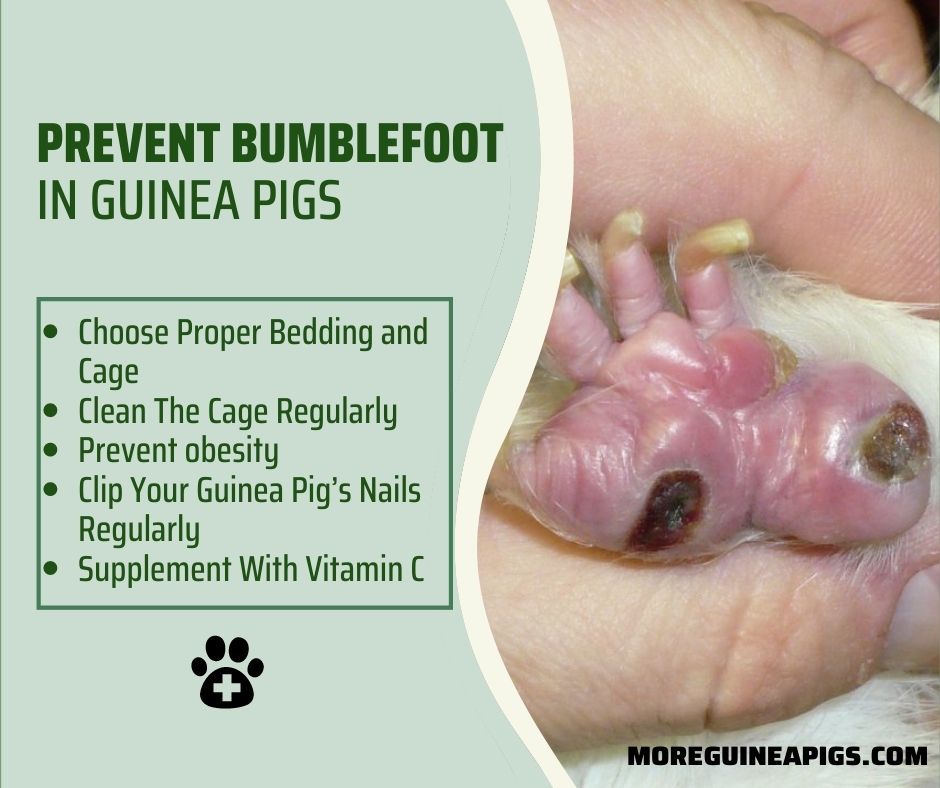
Choose Proper Bedding and Cage
- Choose a comfortable and spacious cage for your pigs. If you house more than one guinea pig, make sure there is adequate room for each one. This is very important to prevent overcrowding.
- Ensure there are no hard or abrasive surfaces that lead to sores and lesions.
- Provide soft bedding like paper and cover the floor of the wired cage with canvas, plastic, or coated metal.
Check out: Guinea Pig cage Setup Step-by-Step
Clean The Cage Regularly
- Soiled cages, wet litter, and soaked bedding are breeding grounds for staphylococcus and other bacteria. Thoroughly clean the cage every few days.
- Remove wet litter and soiled bedding daily.
- Ensure there is no feces/urine in the cage.
Prevent obesity
- Once your pet’s Bumblefoot (grade 1-3) lesions have healed, encourage it to exercise.
- Add a playpen in the cage with plenty of safe toys such as toilet paper rolls or cat toys. These will encourage your piggies to climb, move, and play.
- Allow it some free-roaming time in a safe spot in the yard or garden outside.
Clip Your Guinea Pig’s Nails Regularly
- Regular grooming is very important to prevent Bumblefoot from recurring.
- Clip long toenails right away.
Supplement With Vitamin C
- Your vet will provide a Vitamin C supplement (tablet or liquid) or an injection to your piggy. Most supplements contain around 20-25 mg of Vitamin C.
- Feed your pet vitamin C-rich foods like dark leafy vegetables, spinach, broccoli, cauliflower, etc.
Vita Drops-Pure C for Guinea Pig
What Will Happen If Bumblefoot Goes Untreated?
If Bumblefoot is left untreated, it can quickly progress to grades 4 and above. It could spread to the tendons or the bones in the paw. There can be irreversible damage and there isn’t much you can do once it reaches this stage.
Conclusion
Bumblefoot or pododermatitis in guinea pigs occurs due to pressure on the paws as well as a bacterial infection like staphylococcus aureus.
In mild cases the prognosis is good but, if left untreated, it can reach the tendons and the bone causing irreversible damage.
We hope this guide helps you prevent Bumblefoot in your piggy.
